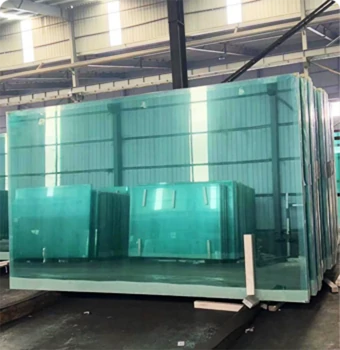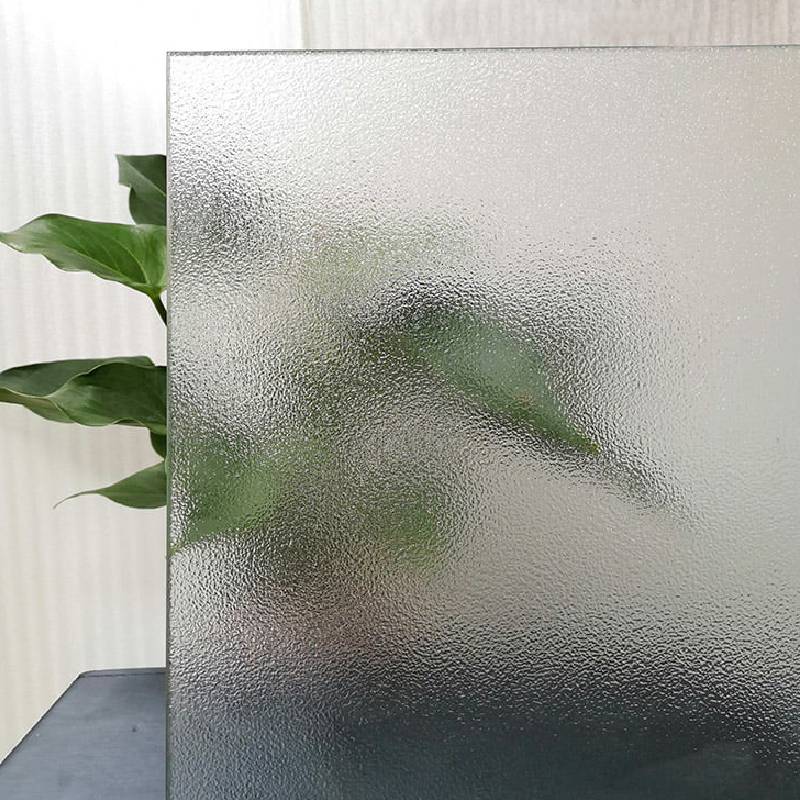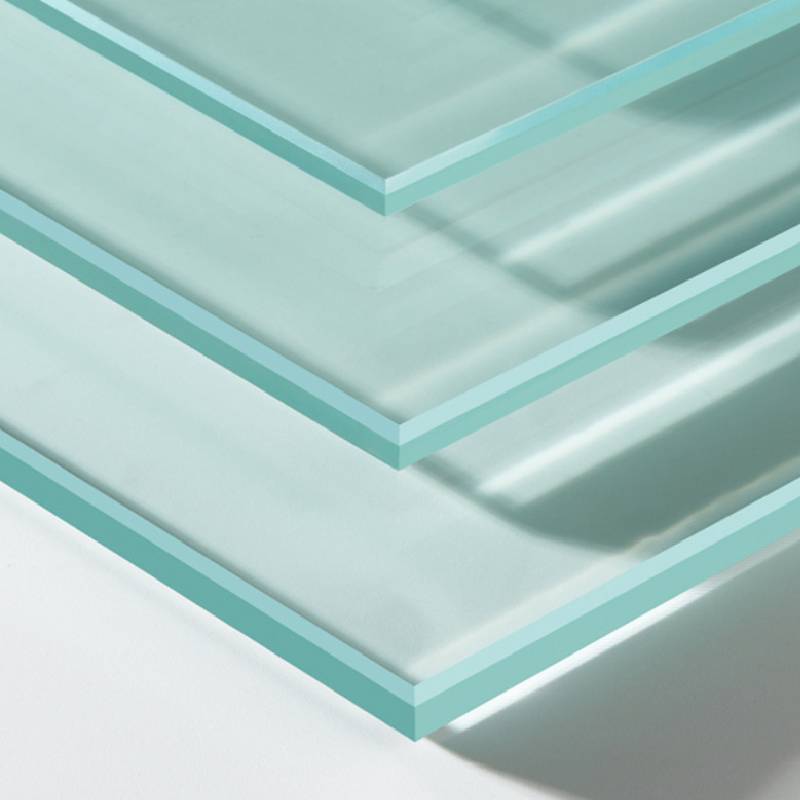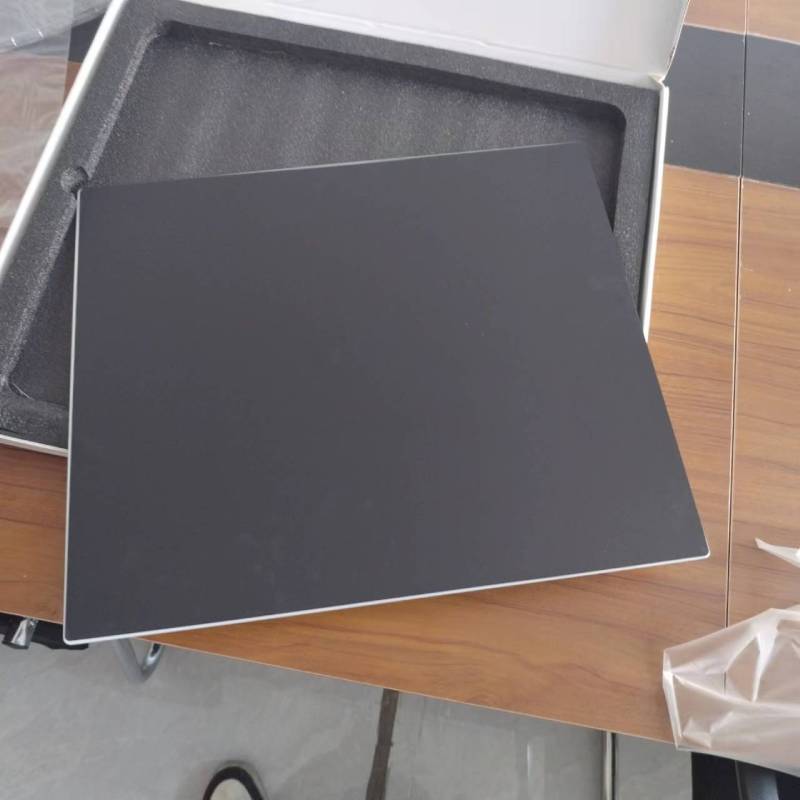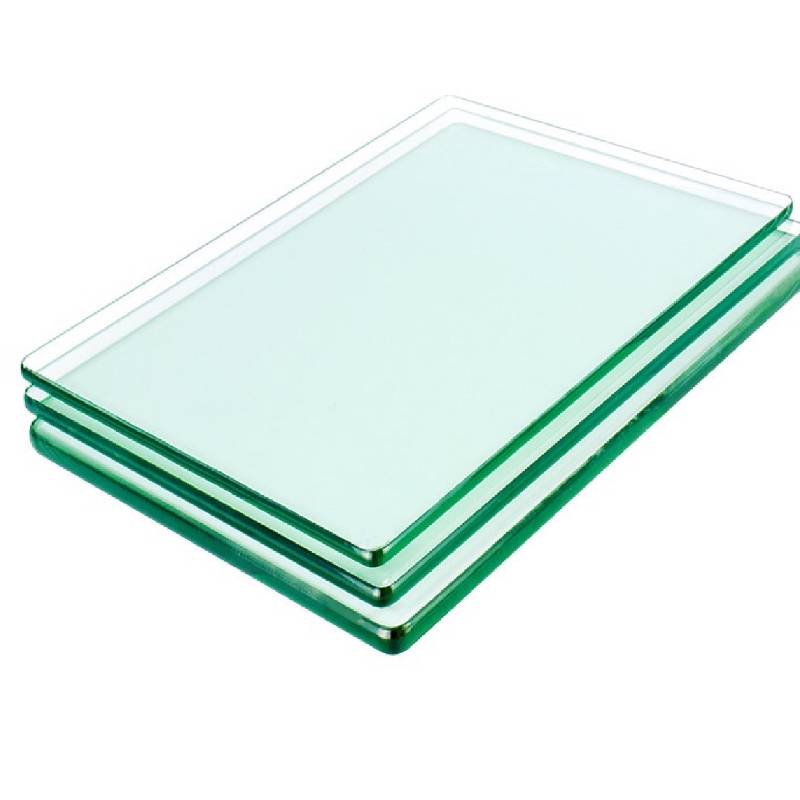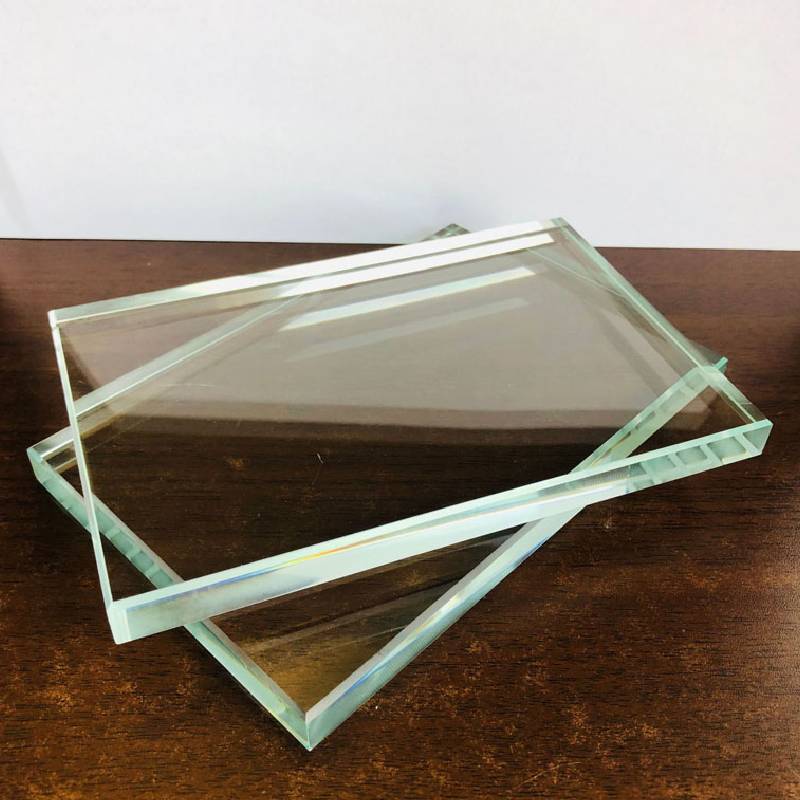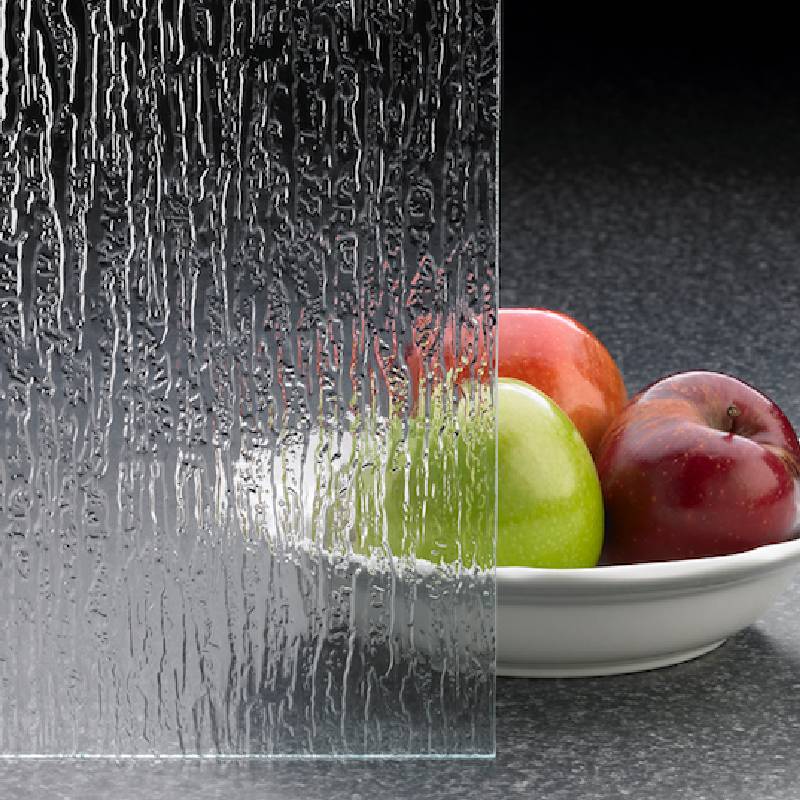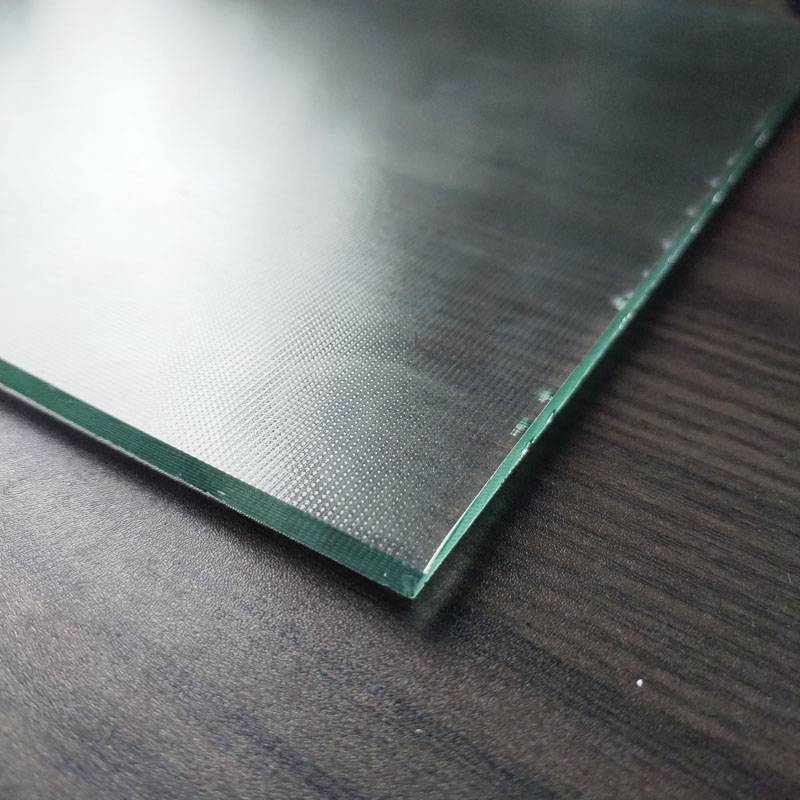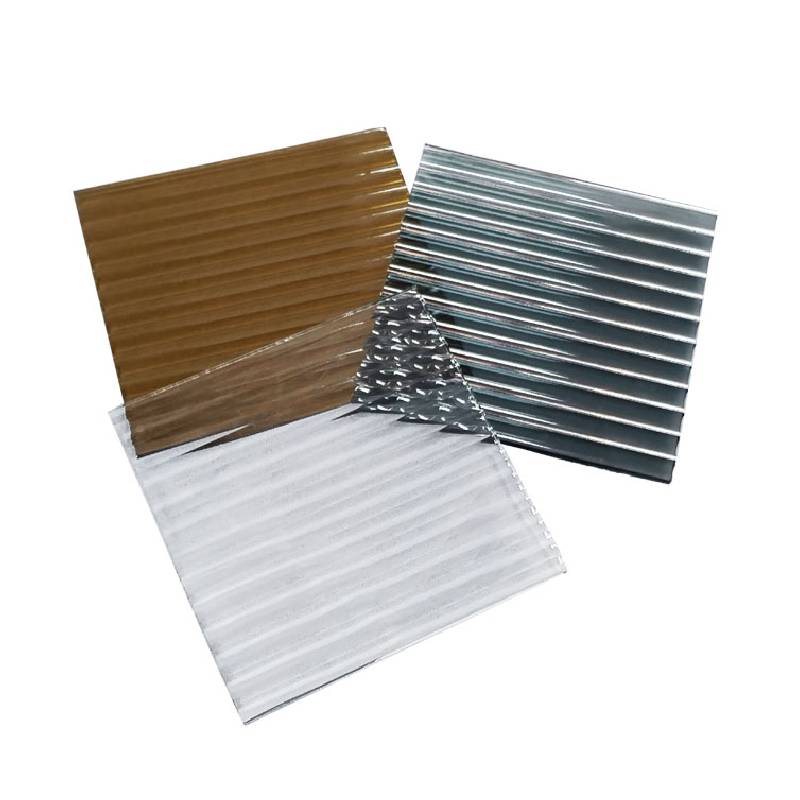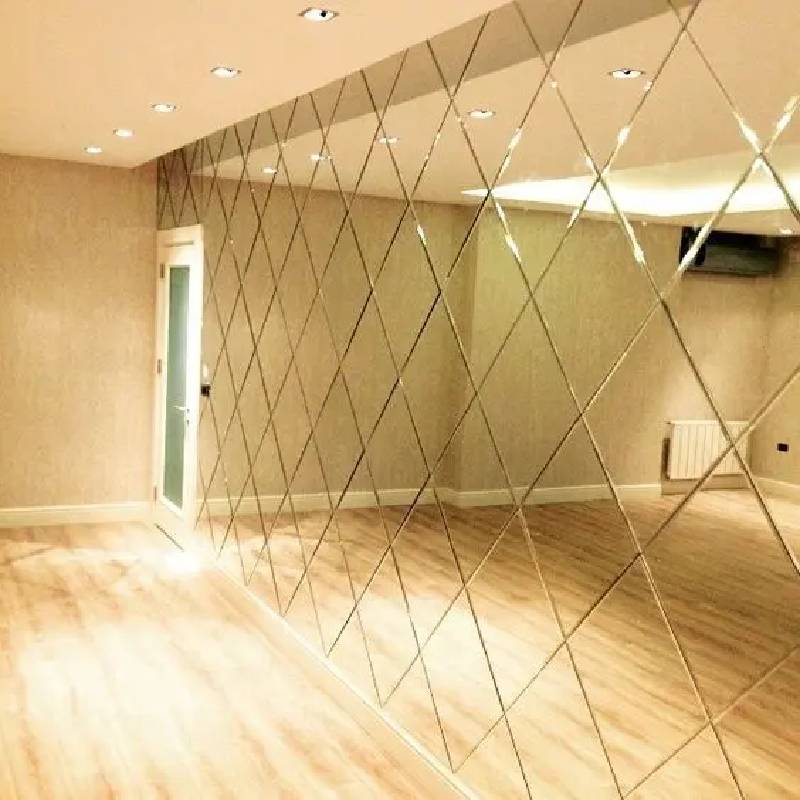Float glass means that the raw materials are melted at high temperature in the furnace. The molten glass continuously flows from the furnace and floats on the surface of the relatively dense tin liquid. Under the action of gravity and surface tension, the glass liquid spreads on the tin liquid surface. It is opened, flattened, and the upper and lower surfaces are formed to be smooth, hardened, and cooled before being led to the transition roller table. The rollers on the roller table rotate, pulling the glass ribbon out of the tin bath and into the annealing kiln. After annealing and cutting, flat glass products are obtained. The biggest feature of float glass is that its surface is hard, smooth, and flat. Especially when viewed from the side, the color is different from ordinary glass. It is white and the object is not distorted after reflection. In addition, due to the relatively good thickness uniformity, the transparency of its products is also relatively strong. It is precisely because of this transparency that it has a wider field of view. The broad field of view allows float glass to be used in many fields.
The production process of float glass is completed in a tin bath where protective gas (N2 and H2) is introduced. Molten glass continuously flows from the tank kiln and floats on the surface of the relatively dense tin liquid. Under the action of gravity and surface tension, the molten glass spreads and flattens on the tin liquid surface, forming an upper and lower surface that is smooth, hardened, and cooled. Then he was led to the transition roller table. The rollers on the roller table rotate, pulling the glass ribbon out of the tin bath and into the annealing kiln. After annealing and cutting, flat glass products are obtained. Compared with other forming methods, the advantages of float method are: it is suitable for high-efficiency manufacturing of high-quality flat glass, such as no corrugation, uniform thickness, smooth upper and lower surfaces, and parallel to each other; the scale of the production line is not limited by the forming method, and the energy per unit product Low consumption; high utilization rate of finished products; easy to scientifically manage and realize full-line mechanization and automation, high labor productivity; continuous operation cycle can last for several years, which is conducive to stable production; can provide suitable conditions for online production of some new varieties, such as Electric float reflective glass, spray film glass during annealing, cold end surface treatment, etc.
Float glass is widely used and is divided into tinted glass, float silver mirror, float white glass, etc. Among them, ultra-white float glass has a wide range of uses and broad market prospects. It is mainly used in the fields of high-end buildings, high-end glass processing and solar photovoltaic curtain walls, as well as high-end glass furniture, decorative glass, imitation crystal products, lighting glass, precision electronics industries, Special buildings, etc. Float glass has relatively good thickness uniformity and relatively strong transparency. Therefore, after tin surface treatment, it is relatively smooth. Under the action of smoothing, flame and polishing, it forms a surface that is relatively neat and flat. Glass with better strength and stronger optical properties. This kind of float glass has the characteristics of good transparency, brightness, purity, and bright indoor light. It is also the best choice for building doors, windows, and natural lighting materials. It is also one of the most widely used building materials. one.
The history of float glass can be traced back to the late 1950s. The British Pilkington Glass Company announced to the world that it had successfully developed the float forming process for flat glass. This was a revolution in the original grooved top forming process. However, the Western technology blockade at that time made China's float glass development and production have to take the path of self-reliance and independent innovation. In May 1971, the former Ministry of Building Materials Industry decided to conduct float process industrial trials in Luobo. Glass experts from all over the country gathered in Luobo, and more than a thousand employees of Luobo participated in the war. On September 23, 1971, under the guidance of department leaders and relevant experts, and with the full cooperation of fraternal units, the cadres and workers of Luoyang University worked together for more than three months and finally successfully built the first float. The glass production line produced my country's first float glass. From 1971 to 1981, CLFG implemented large-scale technical transformation on this line three times. The melting capacity of the production line reached 225 tons, the plate width exceeded 2 meters, and the overall yield reached 76.96%. At the end of 1978, In early 1979, thinner 4 mm glass was stably produced. The technology and equipment of "Luoyang Float Glass Process" were also improved day by day, and the technical level was continuously improved.
Pludinātā stikla priekšrocības galvenokārt atspoguļojas šādos aspektos: pirmkārt, tam ir labs līdzenums un nav ūdens viļņošanās; otrkārt, izvēlētajām rūdas kvarca smiltīm ir labas izejvielas; treškārt, ražotais stikls ir tīrs un ar labu caurspīdīgumu; visbeidzot, struktūra Kompakta, smaga, gluda uz tausti, smagāka par plakanu plāksni uz tāda paša biezuma kvadrātmetru, viegli sagriežama un nav viegli salauzta. Šīs priekšrocības padara pludināto stiklu plaši izmantotu celtniecībā, automobiļos, dekorācijā, mēbelēs, informācijas industrijas tehnoloģijās un citās nozarēs.
- Pludinātā stikla biezums
Parastais biezums 3 mm, 4 mm, 5,5 mm, 6 mm, 8 mm, 10 mm, 12 mm
Īpaši plāns 1,2 mm, 1,3 mm, 1,5 mm, 1,8 mm, 2 mm, 2,3 mm, 2,5 mm
Īpaši biezs 15mm, 19mm
Izmērs 1220*1830mm, 915*2440mm, 915*1220mm, 1524*3300mm, 2140*3300mm, 2140*3660mm, 2250*3300mm, 2440*3660mm
 Āfrikas
Āfrikas  albānis
albānis  amharu
amharu  arābu
arābu  armēņu
armēņu  Azerbaidžāņu
Azerbaidžāņu  basku
basku  baltkrievu
baltkrievu  bengāļu
bengāļu  bosniešu
bosniešu  bulgāru
bulgāru  katalāņu
katalāņu  Cebuano
Cebuano  Korsikānis
Korsikānis  horvātu
horvātu  čehu
čehu  dāņu
dāņu  holandiešu valoda
holandiešu valoda  Angļu
Angļu  Esperanto
Esperanto  igauņu
igauņu  somu
somu  franču valoda
franču valoda  frīzu valoda
frīzu valoda  Galisiešu
Galisiešu  gruzīnu
gruzīnu  vācu
vācu  grieķu valoda
grieķu valoda  gudžaratu
gudžaratu  Haiti kreols
Haiti kreols  hausa
hausa  havajietis
havajietis  ebreju valoda
ebreju valoda  Nē
Nē  Miao
Miao  ungāru
ungāru  islandiešu
islandiešu  igbo
igbo  Indonēziešu
Indonēziešu  īru
īru  itāļu valoda
itāļu valoda  japāņi
japāņi  javiešu
javiešu  kannada
kannada  kazahu
kazahu  khmeru
khmeru  Ruandā
Ruandā  korejiešu
korejiešu  kurdu
kurdu  Kirgizstānas
Kirgizstānas  TB
TB  latīņu valoda
latīņu valoda  latviski
latviski  lietuviešu
lietuviešu  luksemburgiešu
luksemburgiešu  maķedonietis
maķedonietis  Malgaši
Malgaši  malajiešu
malajiešu  malajalu
malajalu  maltiešu
maltiešu  maori
maori  maratu
maratu  mongoļu valoda
mongoļu valoda  Mjanma
Mjanma  Nepāliešu
Nepāliešu  norvēģu
norvēģu  norvēģu
norvēģu  oksitāņu
oksitāņu  puštu
puštu  persiešu
persiešu  poļu
poļu  portugāļu
portugāļu  pandžabu
pandžabu  rumāņu
rumāņu  krievu valoda
krievu valoda  Samoa
Samoa  skotu gēlu valoda
skotu gēlu valoda  serbu
serbu  Angļu
Angļu  Šona
Šona  Sindhi
Sindhi  singalu valoda
singalu valoda  slovāku
slovāku  slovēņu
slovēņu  somāliešu
somāliešu  spāņu valoda
spāņu valoda  sundāņu
sundāņu  svahili
svahili  zviedru
zviedru  tagalogs
tagalogs  tadžiks
tadžiks  tamilu
tamilu  tatārs
tatārs  telugu
telugu  taju
taju  Turku
Turku  Turkmēņu
Turkmēņu  ukraiņu
ukraiņu  urdu
urdu  Uiguru
Uiguru  uzbeku
uzbeku  vjetnamietis
vjetnamietis  velsiešu
velsiešu  Palīdzība
Palīdzība  jidiša
jidiša  Joruba
Joruba  zulu
zulu 

